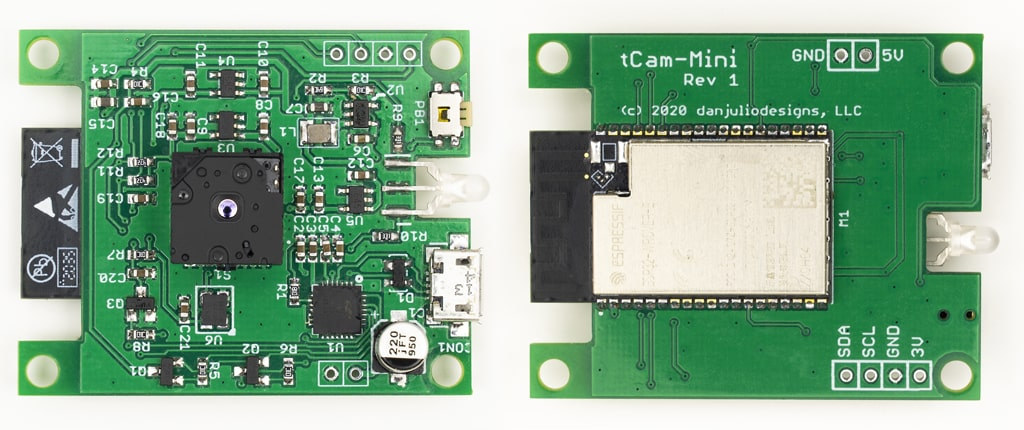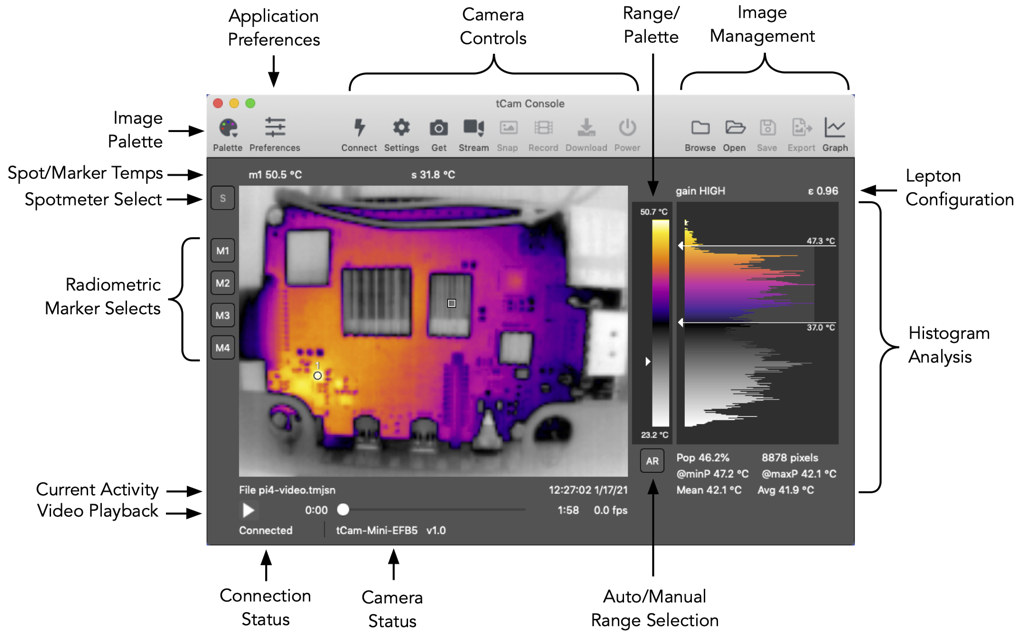While there are plenty of ESP32 camera boards, it’s much harder to find off-the-shelf solutions with ESP32 wireless SoC and an IR thermal camera.
That’s likely why Dan Julio decided to design tCam-Mini board combining an ESP32 module with a Flir Lepton 3.5 sensor with 160×120 resolution to capture radiometric data for thermographic analysis.
tCam-Mini board hardware specifications:
- Wireless module – Espressif ESP32-WROVER-E module with dual-core ESP32-D0WD0V3 WiSoC, 8 MB PSRAM, 8 MB Flash, and PCB antenna;
- Camera – Flir Lepton 3.5: 160×120 pixel radiometric LWIR camera with shutter operating in either Radiometric/TLinear (each pixel contains temperature data) or AGC modes (no temperature data in each pixel but better images).
- Expansion – 4-pin I2C header
- Debugging – Micro USB port with CP2102N-A02 USB to UART bridge for ESP32 boot loader control
- Misc – Dual color (Red/Green) status LED, Factory/Wifi Reset button
- Power supply – 5V input via micro USB port or 2-pin header; 3.3V, 3.0V, 2.8V, and 1.2V output

If you’d rather control the board from your own application a simple json-based command set can be used over a TCP/IP Socket. Both hardware design files (PDF schematics, Gerber files, BoM, etc…) and the ESP-IDF-based firmware source code are available in Dan’s Github repository. The desktop program can also be downloaded from Github but only in binary form.
The tCam-Mini camera board is currently offered for $69.99 plus shipping on GroupGets, but note that the price does not include Flir Lepton 3.5 camera sold as an option for $199.99. The only other ESP32 thermal camera I could find is Seeed Studio’s MLX90621 BAB Thermal Imaging Camera / 16×4 IR Array sold for $129.99 but currently out of stock.

Jean-Luc started CNX Software in 2010 as a part-time endeavor, before quitting his job as a software engineering manager, and starting to write daily news, and reviews full time later in 2011.
Support CNX Software! Donate via cryptocurrencies, become a Patron on Patreon, or purchase goods on Amazon or Aliexpress




